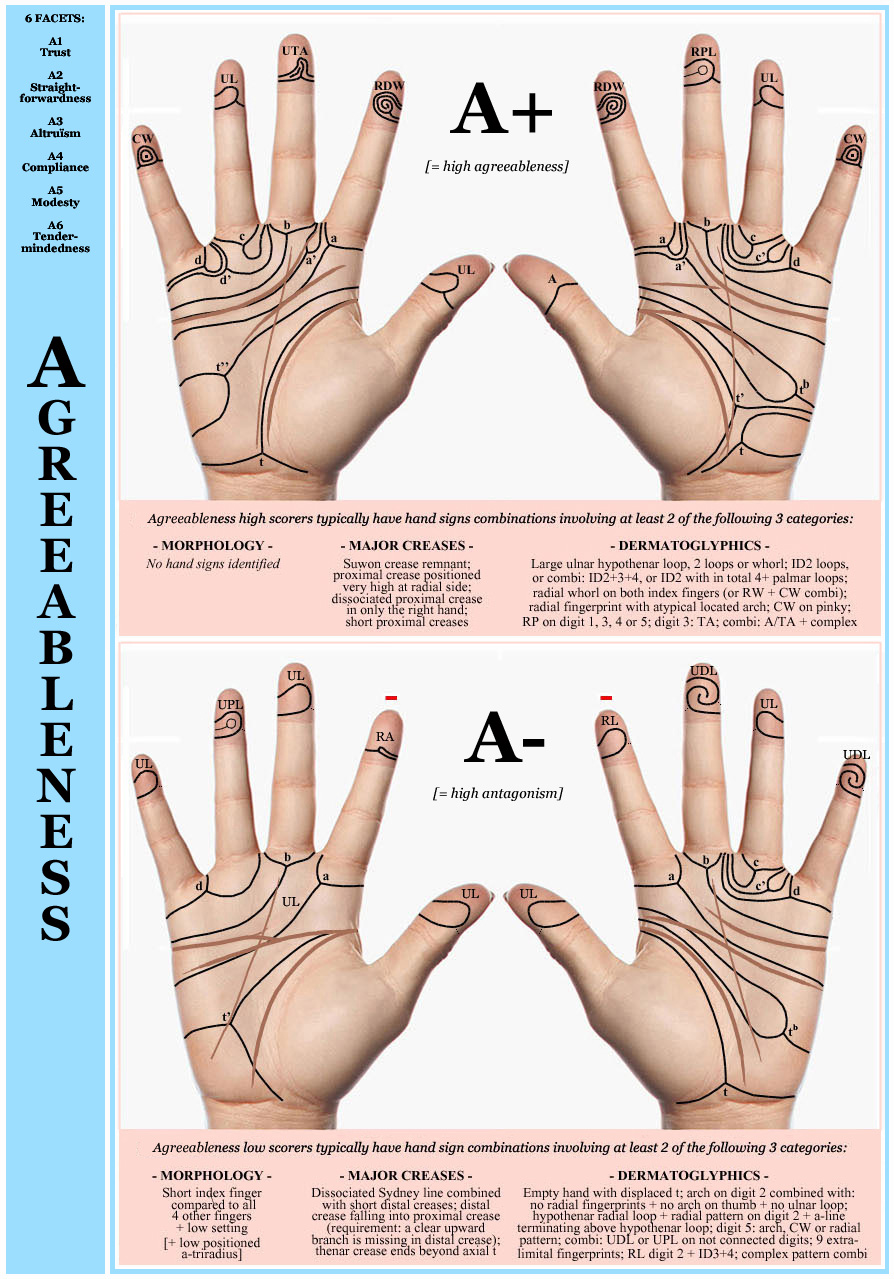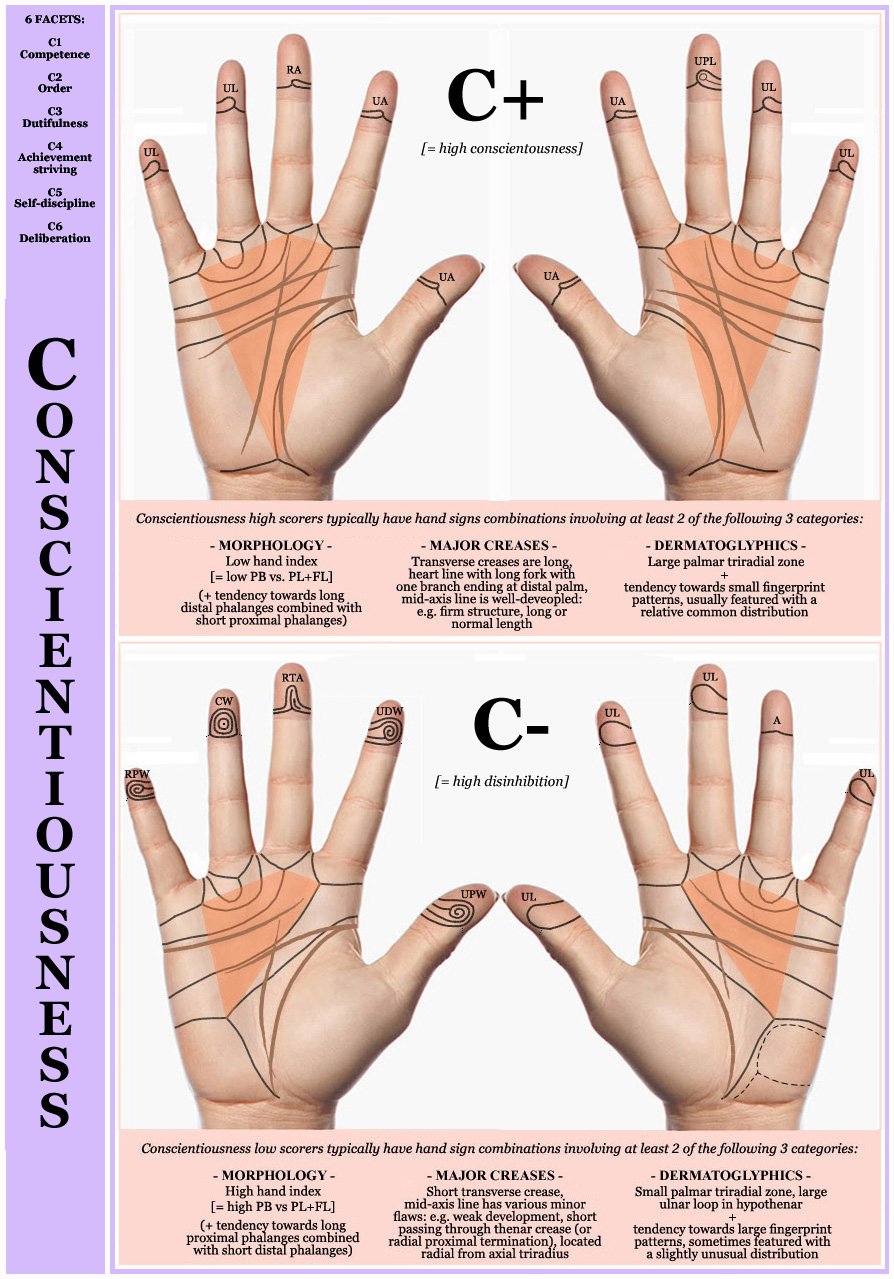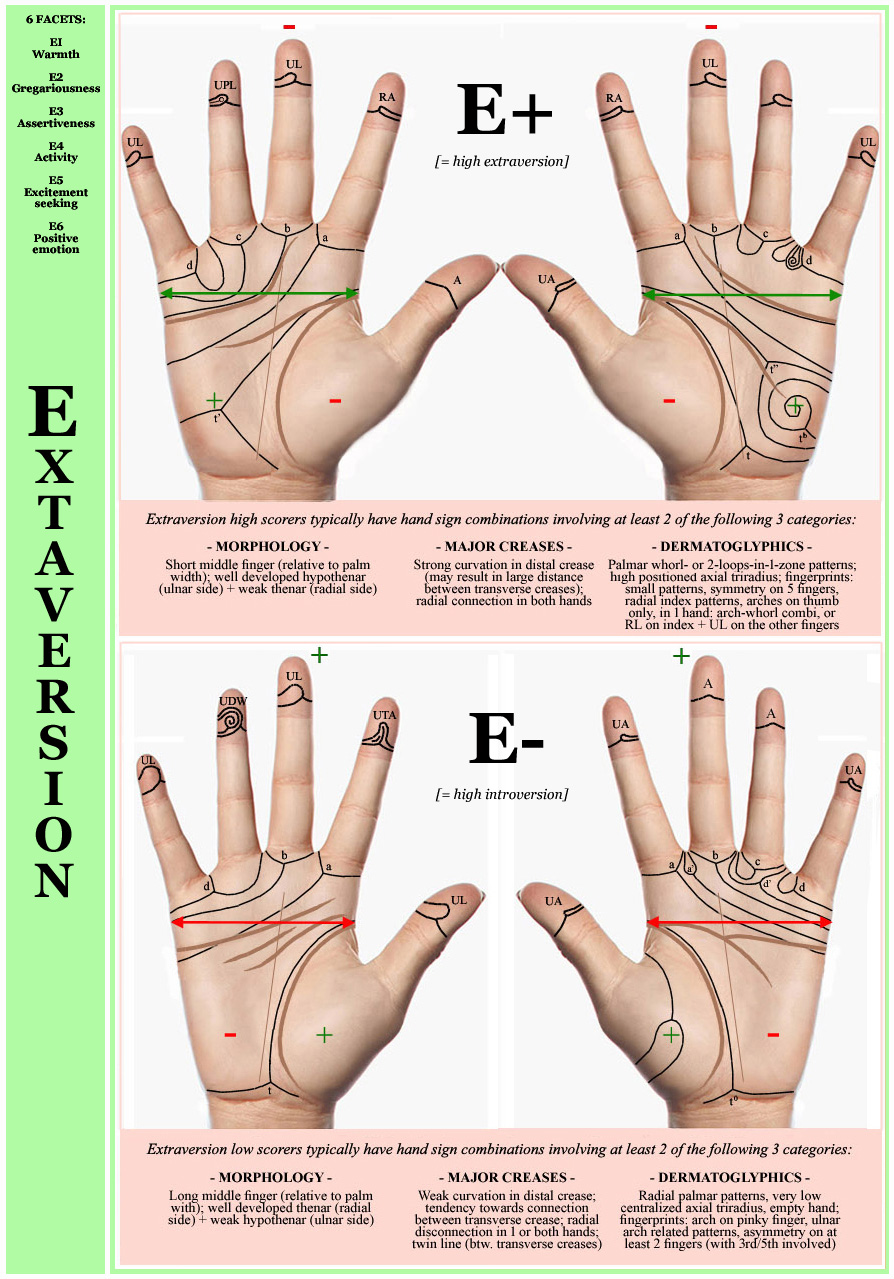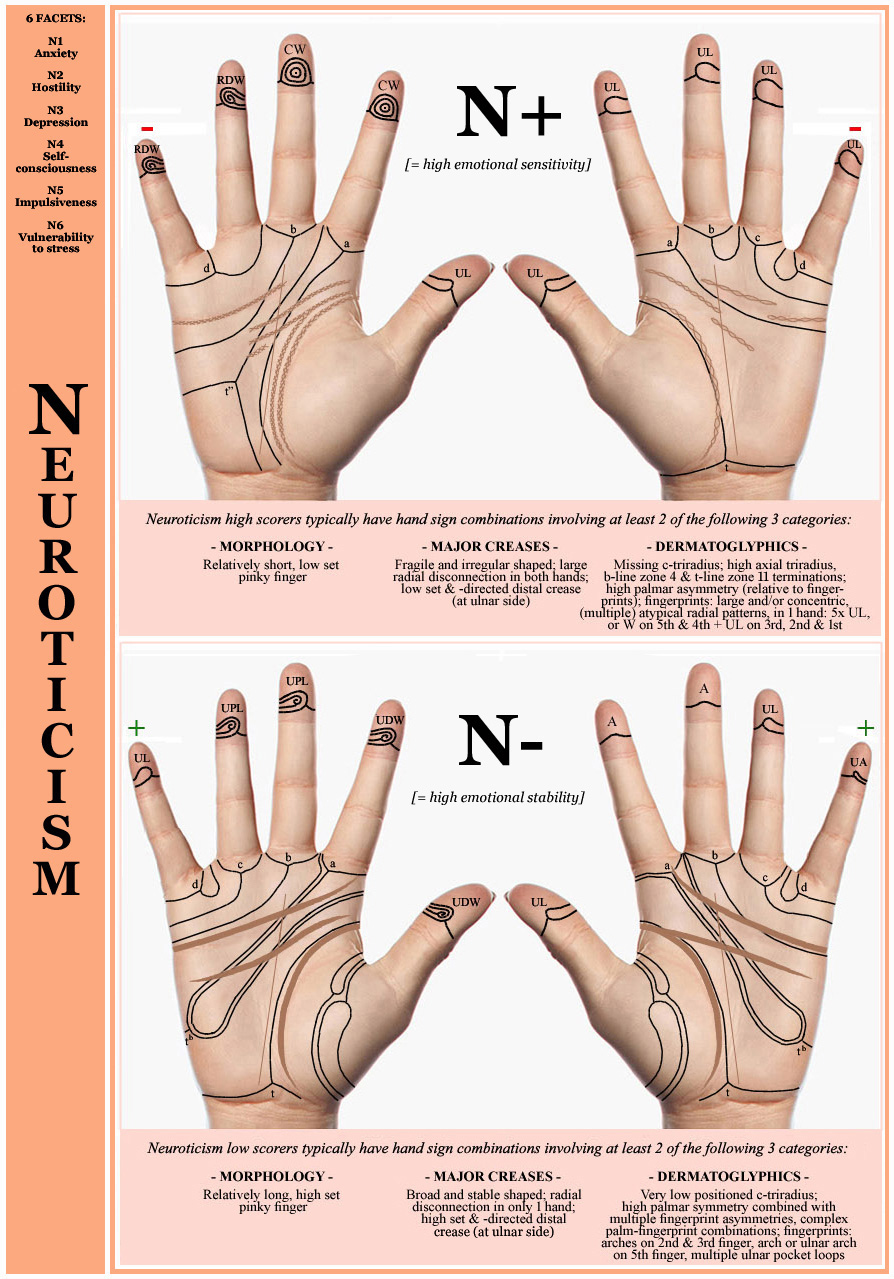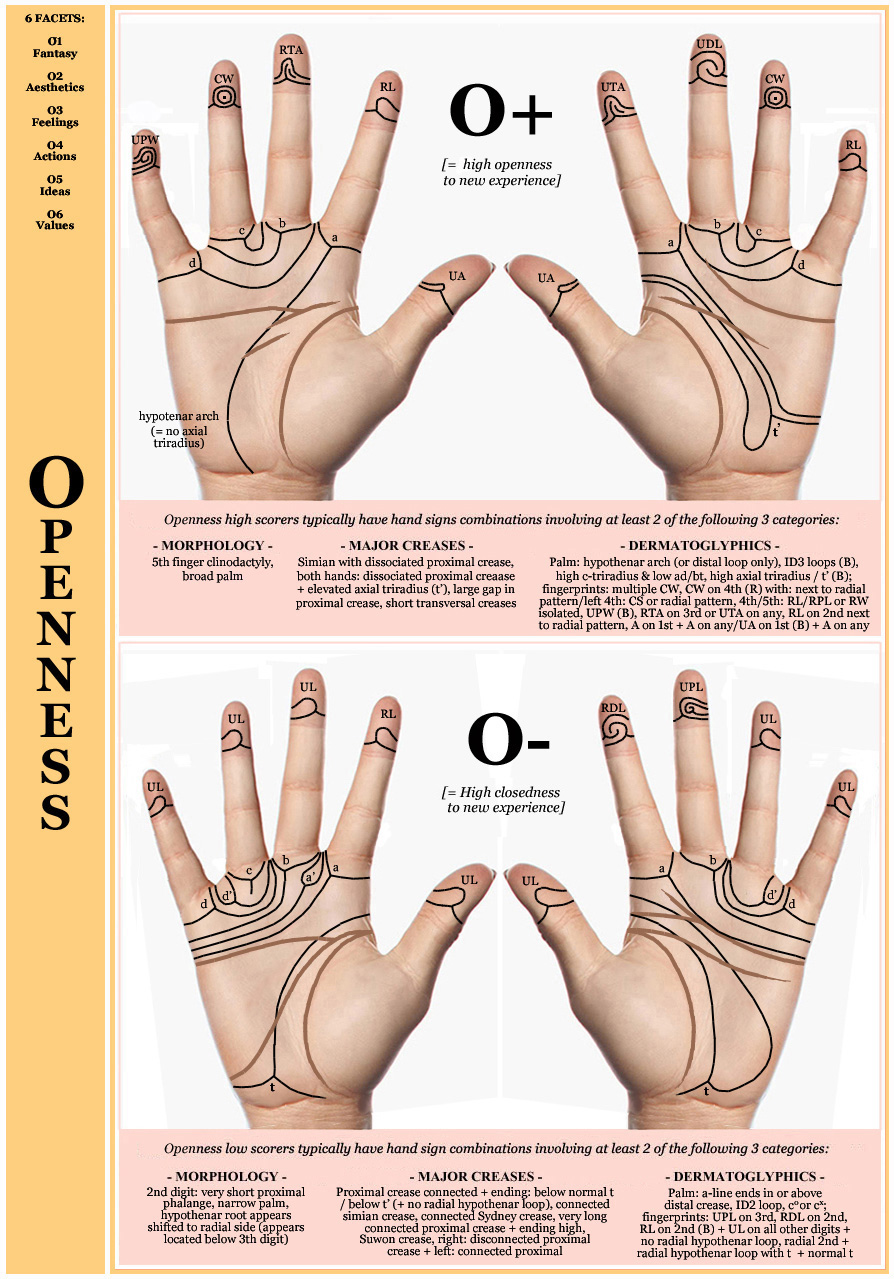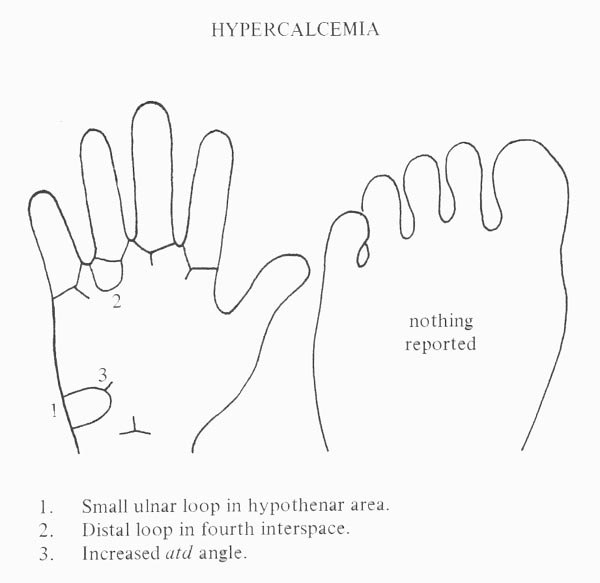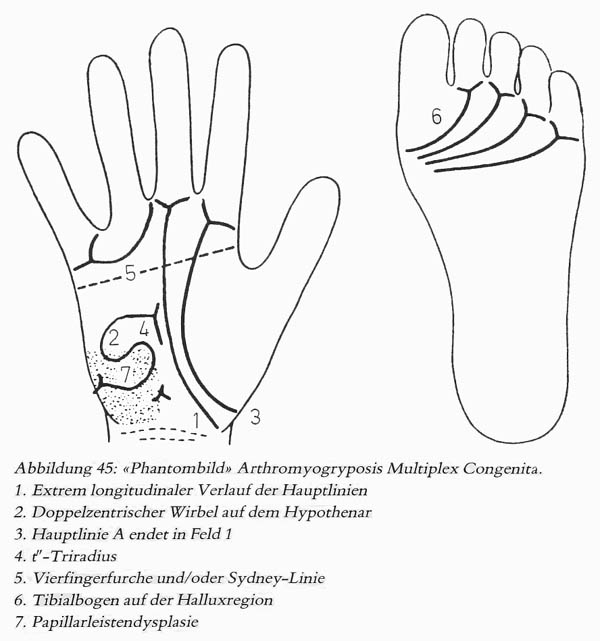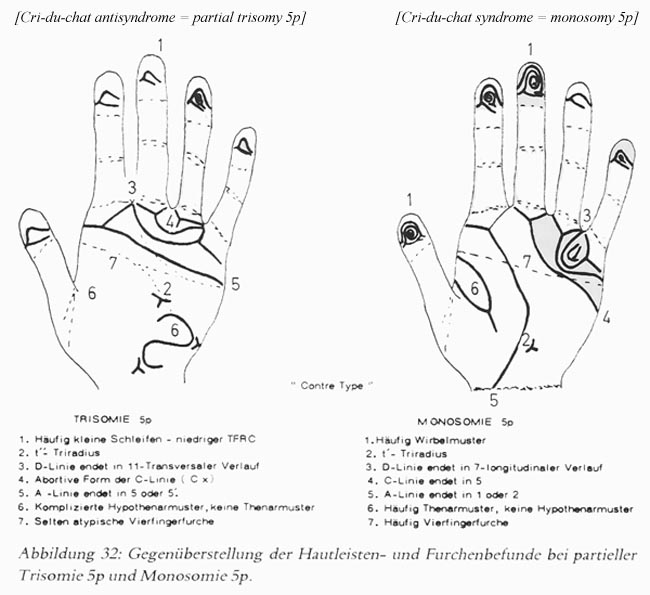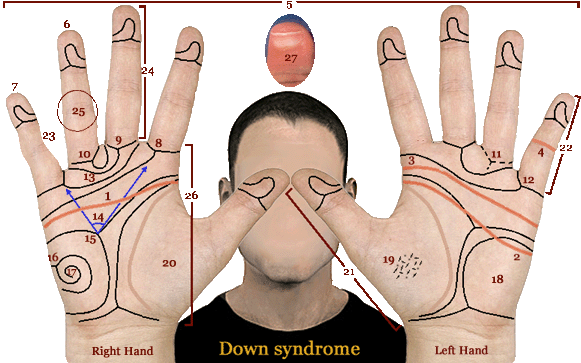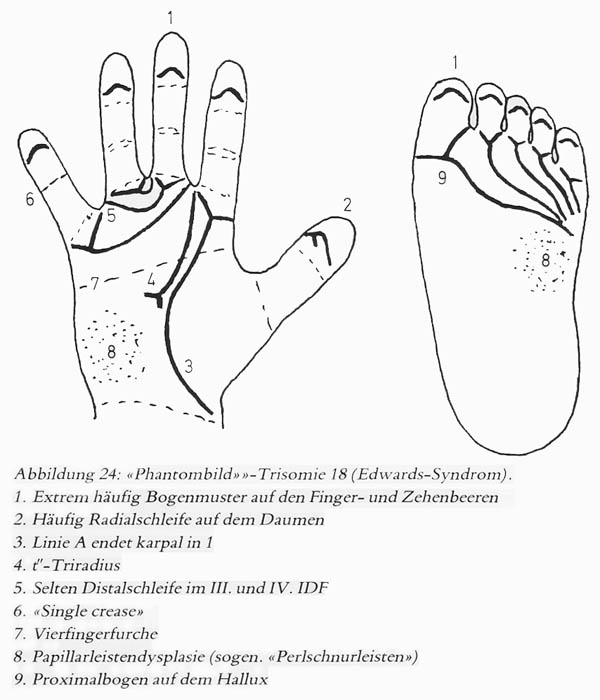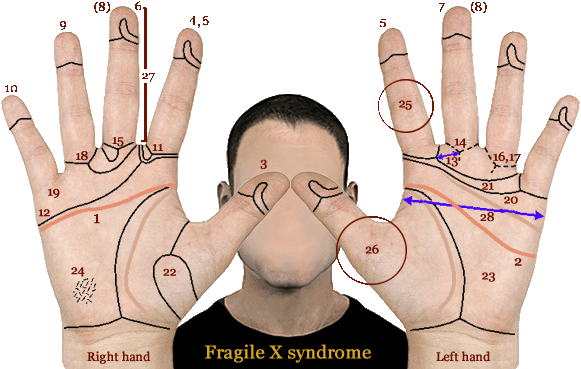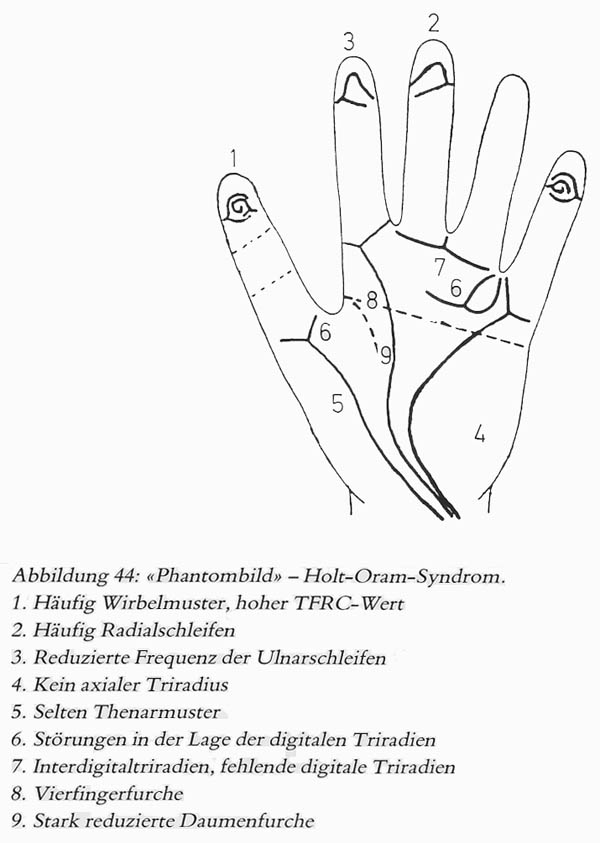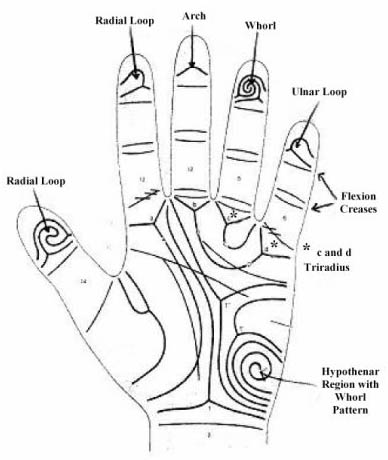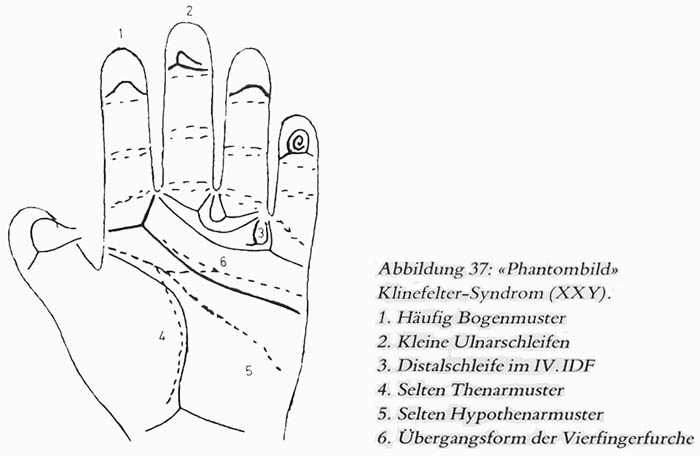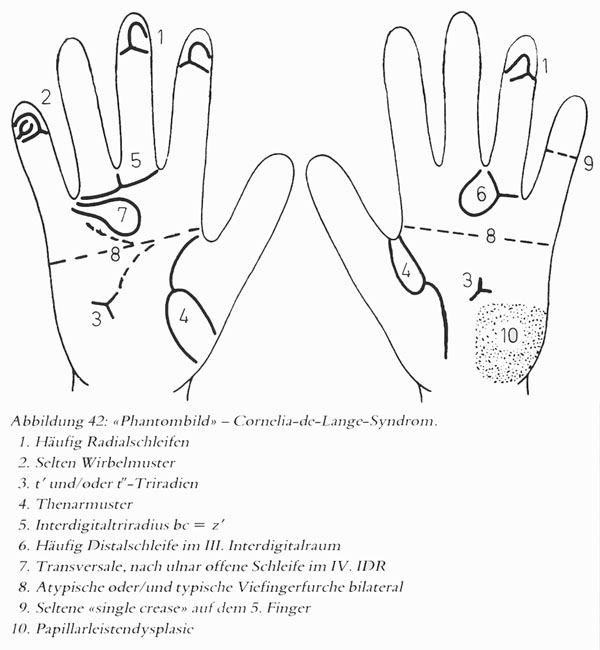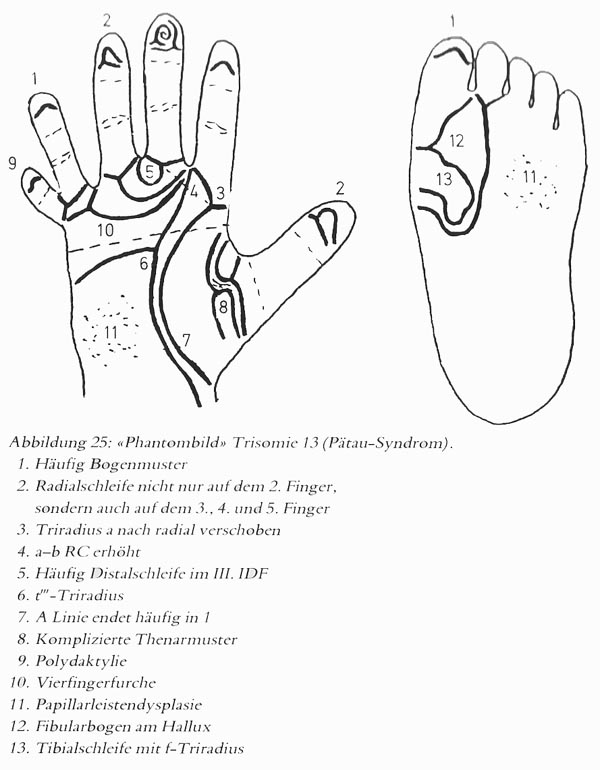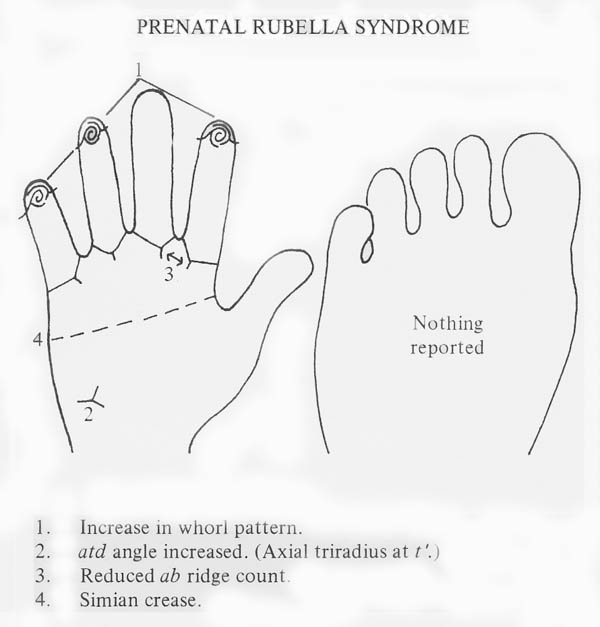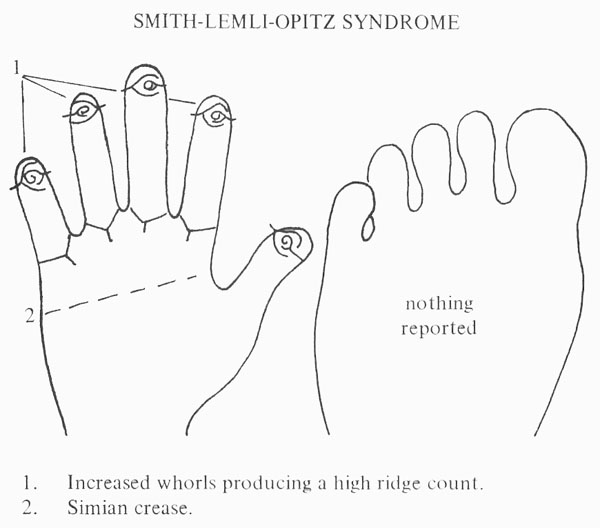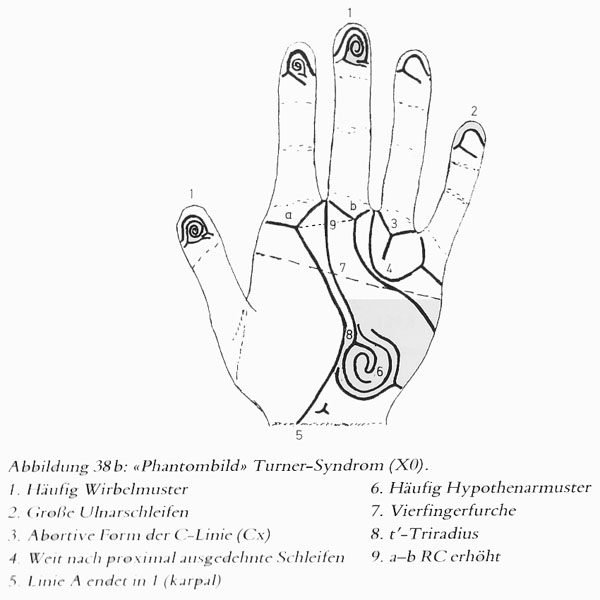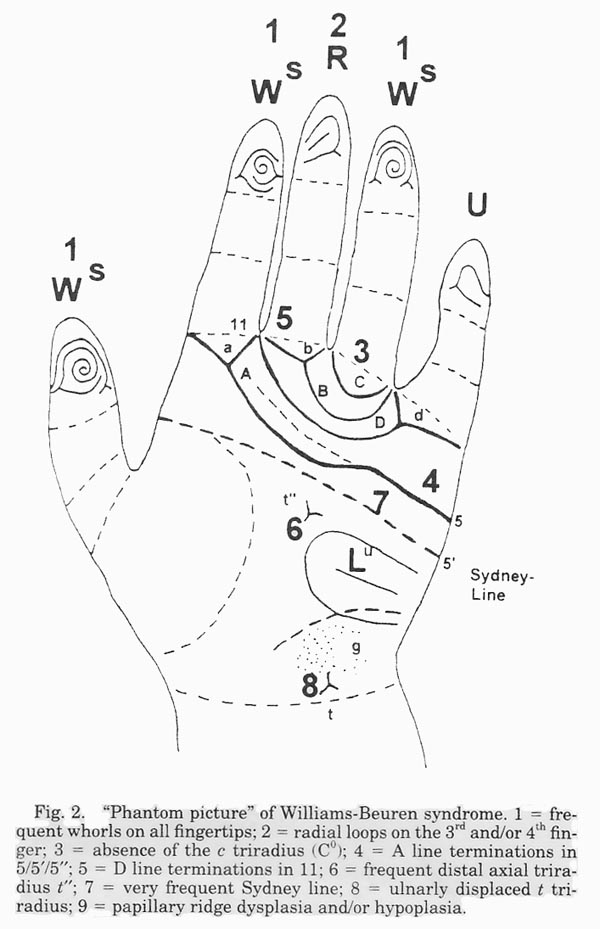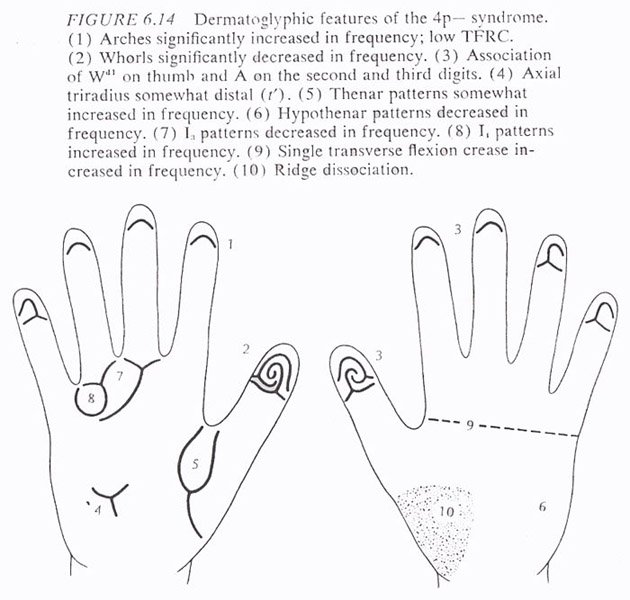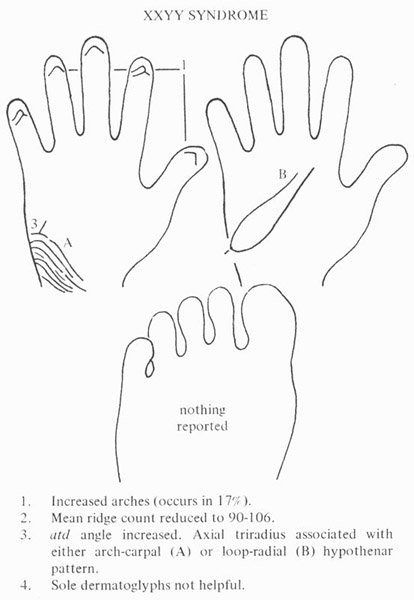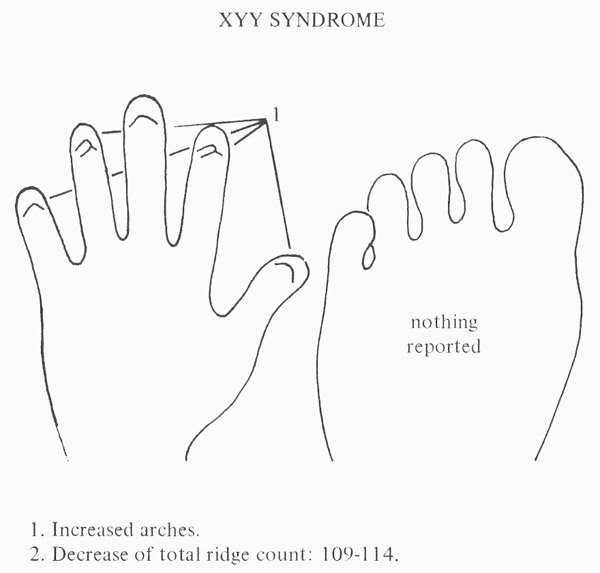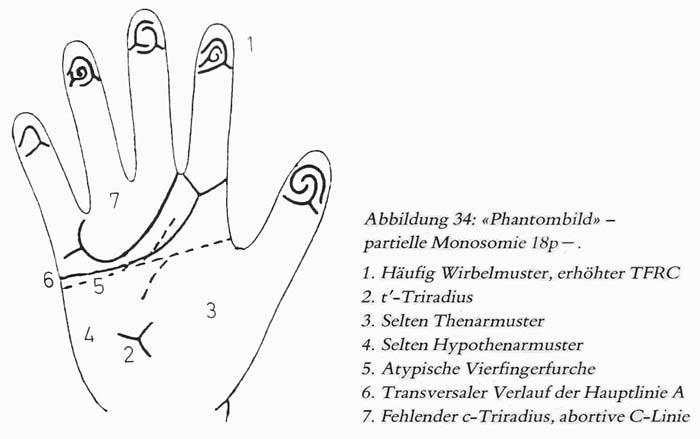
1 Scientific Hand Chart Collection:
Prader-Willi syndrome!
1 Hand Chart for Prader-Willi syndrome!
Prader-Willi syndrome (PWS) is a rare congenital disorder characterized by learning difficulties, growth abnormalities, and obsessive eating; the syndrome is caused especially by the absence of certain genes normally present on the copy of chromosome 15 (q 11-13) inherited from the father.
Prevalence: close to 1 in 15,000 births have Prader-Willi syndrome.
One very superficial hand chart is available for Prader-Willi syndrome describing only 2 characteristics in the dermatoglyphics, involving: 1) atd angle greater than 57 degrees, 2) hypothenar loop - see picture below.
NOTICE: Individual hand features described below should not get associated in isolation with any theme; only combinations involving multiple hand levels have potential for diagnostic purposes.
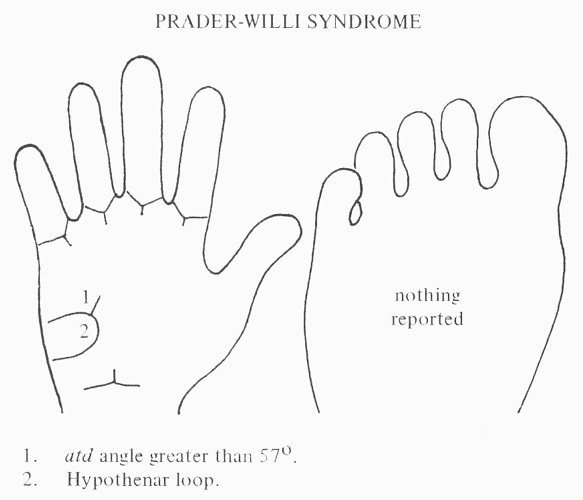
Handbook of Clinical Dermatoglyphs (1971), p.52;
authors: M.S. Elbualy & J.D. Schindeler
Other significant hand signs (not reported inside the hand chart):
Prader-Willi syndrome is often featured with small hands and feet for height and age and/or narrow hands with straight ulnar border (source: A.P. Goldstone, 2003).
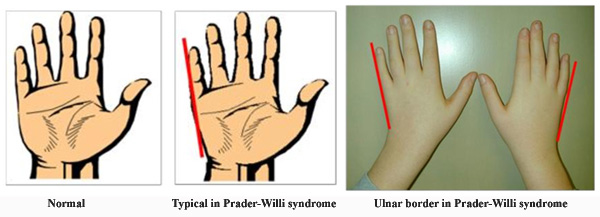
Tapering of fingers and/or clinodactyly of the fifth finger may be present (source: E.M.E. Poskit, 1997; p.269).
Also, a radial termination of main line A (or low ulnar termination), which starts from the palmar triradius below the index finger is common in PWS (sources: D.A.S. Batista et al, 1985, T. Reed & M.G. Butler, 1984, A. Smith & E. Simpson, 2982, K. Rinsho et al, 1979).
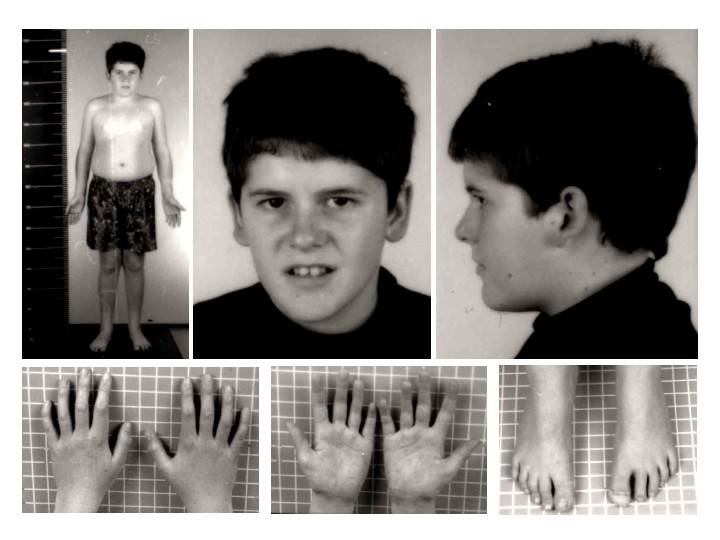

All significant hand signs listed above for Prader-Willi syndrome together cover seven out of the nine perspectives of the hand as defined according Multi-Perspective Hand Reading (including hand level 3, 4, 5 & 8).
A summary of the most significant hand sign combinations in Prader-Willi syndrome is described here:
Decoding the language of the hand:
hand sign combinations in Prader-Willi syndrome!
Hand charts are available for many other diagnostic issues;
start browsing HERE
![]() SCIENTIFIC HAND CHARTS: Introduction
SCIENTIFIC HAND CHARTS: Introduction
Hand charts for Big Five personality dimensions:
• Hand chart(s) for Agreeableness (2x: 1 in 4 people)
• Hand chart(s) for Conscientiousness (2x: 1 in 4 people)
• Hand chart(s) for Extraversion (2x: 1 in 4 people)
• Hand chart(s) Neuroticism (2x: 1 in 4 people)
• Hand chart(s) Openness (2x: 1 in 4 people)
Hand charts for diseases:
• Hand charts for hypercalcemia (1 in 4,000 people)
Hand charts for syndromes:
• Hand charts for arthrogryposis (1 in 10,000 people)
• Hand charts for cri-du-chat syndrome (1 in 30,000 people)
• Hand charts for Down syndrome (1 in 700 live births)
• Hand charts for Edwards syndrome (1 in 6,000 live births)
• Hand charts for fetal alcolhol syndrome (1 in 500 people)
• Hand charts for fragile-X syndrome (1 in 5,000 people)
• Hand charts for Holt-Oram syndrome (1 in 100,000 live b.)
• Hand charts for Kabuki syndrome (1 in 32,000 people)
• Hand charts for Klinefelter syndrome (1 in 1000 males)
• Hand charts for de Lange syndrome (1 in 15,000 live births)
• Hand charts for Marfan syndrome (1 in 5,000 people)
• Hand charts for Patau syndrome (1 in 15,000 live births)
• Hand charts for Prader-Willi syndrome (1 in 15,000 births)
• Hand charts for Rubella syndrome (1 in 100,000 people)
• Hand charts for Rubinstein syndrome (1 in 200,000 births)
• Hand charts for SLOS (1 in 40,000 births)
• Hand charts for Turner syndrome (1 in 2,000 female births)
• Hand charts for Warkany syndrome (1 in 200,000 births)
• Hand charts for Williams syndrome (1 in 14,000 births)
• Hand charts for Wolf-Hirschhorn syndrome (1 in 50,000 b.)
• Hand charts for XXYY syndrome (1 in 30,000 male births)
• Hand charts for XYY syndrome (1 in 1,000 male births)
• Hand charts for 18 deletion syndromes (2 in 40,000 live b.)
NOTICE: Reflexology hand charts are not included in this section because the scientific foundation of any of such charts is actually unknown; nevertheless, you can read more about the fundamentals of such charts HERE.
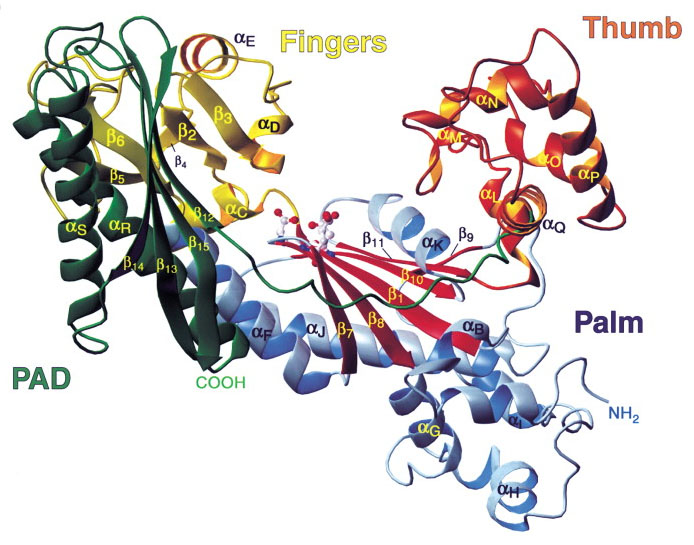
Other charts & maps:
• Fingerprints world map
• Hand reading experts world map
• Hand reflexology charts
